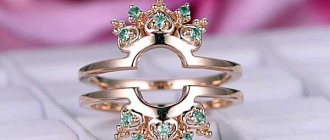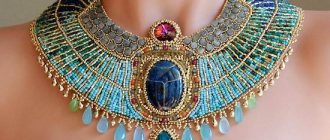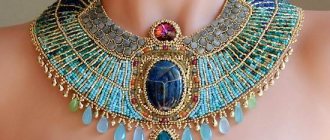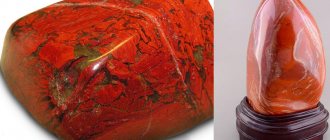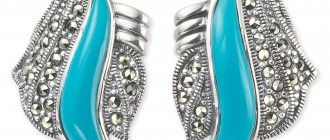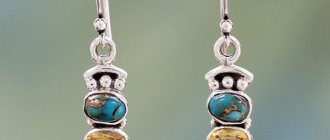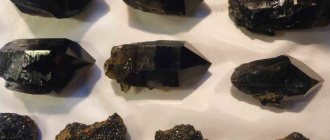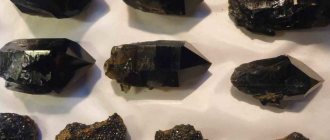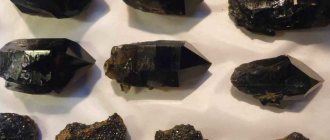Almost all jewelry with alexandrite was exported abroad after the establishment of Soviet power. Already in the USSR, stone was also mined for export abroad. However, the Ural gem has become popular far beyond Russia. In pre-revolutionary times, it was available only to noble and rich people. Now the “imperial” jewel is appreciated by all people. Alexandrite remains one of the rarest gems on the planet. And, therefore, one of the most expensive.
How the “imperial” stone came into fashion
Alexandrite is a young stone. Unlike other precious minerals, its history goes back no more than two centuries. When the lighting changes, the crystal changes color. For this unique property, it fell in love with the Russian Emperor Alexander II, and its industrial production began in the 1840s.
Following the tsar, the fashion for jewelry was picked up by the high society of St. Petersburg. The mineral was recognized as the official stone of Imperial Russia. Jewelry workshops were inundated with orders for jewelry with alexandrite. Both women and men were interested in him.
The frame was simple, often made of silver. The form was also not very varied. At that time, craftsmen made rings, rings, earrings or pendants. Even rich people could not always afford to buy a set of alexandrite. As a rule, they were limited to one decoration. Among the class nobility and royal aristocrats, jewelry was traditionally passed down by inheritance. Grandmothers and mothers gave earrings to their daughters before the wedding, and fathers gave family rings to their sons.
After 1917, when the nobility was abolished, many of its representatives ended up abroad. A significant part of jewelry with natural alexandrite was sold to private collections or melted down. Nowadays, the natural mineral is very rarely found at auctions.
Jewelry with alexandrites from the Soviet period
With the advent of Soviet power, mineral deposits, of which there were few, fell into decay. Precious stones were exported. Only a small share remained within the country. Due to the high cost of extraction, it was inaccessible to proletarians, and the policies of Soviet leaders did not approve of such luxury as natural gems.
There was no domestic demand for elaborate, expensive necklaces, tiaras or bracelets. The elite, who could afford to travel abroad, found it easier to purchase jewelry there. The majority of the population had to be content with gold earrings, and the rings were often silver-plated. At best, a pendant with medium-sized corundum in gold. Corundum is a mineral analogue of sapphire, comparable in hardness to real alexandrite.
Since the 1980s, stone mining in the USSR has ceased. But from that time on, deposits of the precious mineral began to be developed in other countries (in the south of India, Brazil, Africa).
Ural alexandrites
Alexandrite is perhaps the rarest gemstone. Alexandrite is a variety of the mineral chrysoberyl, the stone has the unique property of changing its color depending on the wavelength (lighting); the color can be bluish-green or crimson-red.
Ural alexandrites are still considered the best in the world due to the unsurpassed property of pleochroism (color change); not a single gemstone can boast of such a wonderful property.
The first alexandrite in the Urals was found in 1834; this mineral was named in honor of Emperor Alexander II. Chrysoberyl, which does not have pleochroism (color change effect), cannot be classified as alexandrite.
Ural alexandrites are rare. The price of alexandrites on the world market can reach fabulous figures of up to 100 thousand dollars or more per 1 carat.
Technical conditions (TS) for alexandrites:
According to the technical specifications, alexandrites are usually classified according to the degree of color change (color), purity indicator (quality indicator), type of cut, and quality of cut.
According to the degree of color change, alexandrites are divided into three groups:
- 1a - alexandrites with a strong alexandrite effect;
- 2a - alexandrites with a medium alexandrite effect;
- For - alexandrites with a weak alexandrite effect.
The purity indicator of alexandrites is characterized by transparency, brilliance, the presence of natural defects, and the nature of their distribution.
Natural defects in alexandrites are represented by gas-liquid, pinpoint, needle-shaped and scaly inclusions of other minerals, cracks and stripes of various orientations, etc., associated with the structure and morphological features of natural alexandrite crystals.
In terms of purity, faceted alexandrites are divided into three purity groups; alexandrites with a cabochon cut type are divided into two:
- G1, G2, G3 – faceted stones;
- K1 and K2 – stones have a cabochon cut type.
There are also additional purity criteria G3+, G2+ are intermediate values.
Mostly precious stones, including alexandrites, are cut by weight, i.e. The cutter’s goal is to “stretch” the stone by weight; the shape of the future jewelry insert is selected based on the proportions of the raw material. If the raw material allows, then the cutter applies a facet cut (the stone has edges); if the raw material is of lower quality, then the cutter will cut such raw material into a cabochon. The cost of cabochons is almost always less than the cost of a stone with applied edges of the same mass.
Quality groups for processing jewelry stones - “A”, “B”, “C”, “Dekl”., applied by gemologists to all cut stones
Stone in a silver setting
The cool shade of a silver frame requires that the color of the mineral also be cold. For example, purple, blue, green. Against this background, other stones next to alexandrite in silver also look appropriate. Jewelers prefer to create compositions using natural emeralds, diamonds, and pearls.
Among artificial minerals, cubic zirconia or zirconium are suitable for alexandrite in silver.
It is desirable that the framing gems be transparent. They should not distract attention from the central stone, its rich, changeable color. Such jewelry with alexandrite in a silver frame will look harmonious and will emphasize the good taste of the owner. They are suitable for everyday life; it is appropriate to wear them to work or a business meeting. Silver frames are an elegant choice. At the same time, the decoration will not be conspicuous, attracting unnecessary attention.
Use of gold frame
When deciding to use gold as a setting for a gem, the jeweler must maintain moderation and not make the jewelry too pretentious. Gold itself accentuates attention, especially if used for pendants. Additionally decorated with a precious stone, it will become the center of the image. Therefore, alexandrites must be inserted into such a frame one by one if the product itself is small (a ring or a pendant). If the jewelry is large enough to be encrusted with several stones, then choose agate, sapphire, ruby, and amethyst. One of the gems will be larger than the rest. Which one depends on the color palette of the decoration.
Gold earrings or necklaces with alexandrite, decorated with several stones, look luxurious. You shouldn't wear them every day. It is better to use for festive occasions, on special occasions. In such an environment, setting the mineral in gold will be appropriate and harmonious.
Gemstone in jewelry
A professional who knows the jewelry business prefers to work with stone only by prior order. This is due to the rarity of alexandrite and its high cost. On the international market, 1 carat of stone is valued at several tens of thousands of dollars. Although the average size of a natural crystal rarely exceeds 5 carats, the amount is still impressive.
The mineral has become prestigious, and guaranteed natural stones are bought only in premium jewelry stores and at auctions. Or, if you are very lucky, they are found in old antique collections.
Alexandrite in jewelry, already original, in combination with individual design makes an indelible impression. The stone has the following advantages:
- changes color depending on lighting;
- it is rare, which means it is exclusive;
- goes with any frame;
- speaks of the good taste of the owner;
- this is a profitable investment.
For those who want to acquire a budget product with a precious mineral, there are two options. Either make custom jewelry with a small stone, or use a lab-grown gem. For example, this is how alexandrite beads are made.
An artificial gem is much cheaper than a real one. It is capable of changing color from purple to red and vice versa. It will be difficult for a non-specialist to distinguish them.
Jewelry
The uniqueness of alexandrite primarily lies in its ability to change color depending on the lighting. For example, in daylight the stone can be green or blue, but in artificial light it changes to crimson. This effect is due to the presence of iron, chromium, titanium and vanadium in the mineral composition.
It is noteworthy that stones from different deposits have their own differences in color, so they can be divided into the following types:
- Ural - considered the most beautiful, its color palette changes from rich emerald green, less often olive brown, to red-violet;
- Indian - pale green-blue changes to violet-lilac;
- Sri Lankan - these stones are the most common, have a green-blue color during the day, changing to purple-brown in the evening;
- Brazilian - green during the day, changing to olive green towards the fan.
Jewelry with alexandrite is divided into public and premium segments. Elite products are made only to order or purchased at closed auctions. Jewelry is made from the best and most expensive types of gold and platinum, and alexandrite is often complemented with emerald, pearl, sapphire, ruby or diamond. The price of such products sometimes reaches several hundred thousand dollars, and even millions.
Also read: Jewelry with Sultanite
Some jewelers keep alexandrite for their collection without making jewelry from it.
The publicly available assortment is represented by artificial stones framed in silver or gold; cubic zirconia is used as an addition. Artificial alexandrite is obtained in several ways:
- refining - the semi-precious stone is saturated with vanadium and chromium;
- hydrothermal - the mineral is grown entirely from scratch. Such a stone will cost more than a refined one.
Artificially grown gems are practically indistinguishable from natural ones, and sometimes even better - the color palette of tints is wider and brighter, there is no haze, inclusions or cracks on the stone.
Alexandrite is not used to make bracelets or necklaces - it is inserted into necklaces, rings, earrings and pendants.
Photo gallery of stone
Pendants and pendants with “imperial” stone
In pendants, alexandrite is cut in the form of a drop, a rhombus, or a cabochon. Less common is the oval shape of the processed mineral. It is set in gold or silver. Typically, an alexandrite pendant contains one large stone that is the focus of attention. Along the perimeter of the pendant there are smaller transparent gems.
Most often, rubies, topazes, and diamonds are used with it. Depending on the color of the alexandrite, the jeweler can choose an emerald for the pendant that is in harmony with it in shade. It is necessary to take into account the changeable color of the stone in order to choose a jewel to match it.
Pendants made from two different crystals will undoubtedly attract attention. It is important to choose the right size and combination of minerals. They should be chosen so that the shades are opposite - red and green, yellow and blue, black and white. The contrast of alexandrite and other stones is best emphasized with color. It is not advisable to make pendants different in shape. But you can vary the size, making one stone larger and the rest smaller.
What determines the price of alexandrite?
Color. A stone of natural origin, famous for its unique color changing effect, depending on the type of lighting it can be:
- in daylight a greenish tint;
- under incandescent light - red, pink or purple.
The color change, that is, the reverse, changes as a percentage. Stones that have 100% reverse are very expensive. In addition, the stone may have a property called pleochroism, which means it will appear different colors at different angles.
This factor is the main one that will affect the perception of the beauty of the stone. The most valued minerals are those that have a green or bluish-green color in daylight. A stone with a yellowish tint is considered less valuable. Under incandescent light, the most expensive ones will appear red without additional tint effects.
Minerals that produce orange and purple are slightly less appreciated. All stones with good reverse are dark. The rich colors in them can only be seen in very bright lighting. If there is no light, their color will not look very attractive, for example, brown. Alexandrite, which changes color from green to bright red, most likely does not exist at all.
Finding a stone that will have a beautiful color is a very difficult task. Most of the pictures are slightly edited or distorted when photographed. In real life they are very different. Therefore, when you are choosing jewelry with alexandrite in a store, pay attention to how its color looks in different lighting. The main thing is that you like him.
Clarity: The gemstone is of the type that has few inclusions and cracks. Inclusions are represented by gas-liquid veils. Pure specimens without inclusions are very rare. A good quality mineral is transparent; opaque ones are used for making cabochons.
Silver ring with synthetic alexandrite
When purchasing, make sure that the stone is polished, wiped and free of dirt on the surface. First, check its cleanliness with the naked eye; it is important that there are no cracks or inclusions in the center of the stone. Then evaluate its clarity under high magnification, as any defects or excessive cracks can affect the durability of the stone, so such specimens should cost much less.
Weight. The weight of a stone is the basis for the price of all stones. The larger, the more expensive it is. Large alexandrites will cost much more per carat than smaller ones. Almost all alexandrites on the market weigh less than two carats. The largest, over five carats, come from Sri Lanka.
Alexandrite deposits. Mining takes place in Tanzania, Brazil, India and Sri Lanka. There are also specimens from the Urals, but now they are very difficult to find and their prices are fabulous. Gem-quality alexandrites from Brazil and Tanzania are bluish-green in sunlight and reddish-violet in artificial light.
Alexandrites from India, as well as those coming from Sri Lanka, are yellowish when illuminated by the sun and have an orange tint when illuminated artificially. Alexandrite from the Urals changes color from green to crimson-red. The record price for this stone belongs to a specimen mined in those deposits.
Cut. The quality of the cut and its shape also matter. This factor does not influence as much as, for example, in the case of diamonds, but nevertheless it is important. The most popular cut shape for alexandrites is oval. But the rest are also common.
The proportions of the stone should be such that it has maximum brightness and does not have a large window in the center, since the color seems to leak through this area. Sometimes Asian cutters try to leave more mass in the stone and do this by pulling out the bottom of the stone. Regardless of the cut used, including cabochons, polishing and symmetry also remain important parameters.
Other jewelry, sets
Jewelry with alexandrite for the neck is presented in three versions:
- beads – gems are evenly strung on a thread, differ in size, shape or are the same;
- necklace - in the center there is a prominent element or group of elements that are larger and wider than the rest;
- necklace - stones are located next to or at a distance from each other, alternating.
Bracelets are rare and are made from artificial minerals. The products differ in size (small, large elements or their alternation) and shape of stones (oval, round, square, random). An alexandrite bracelet can consist of a single stone with a base of regular or semi-precious metal. Sometimes there are several stones in products, not just alexandrite.
To purchase alexandrite jewelry as a set, you should understand for what purpose it will be worn. The set is needed for special occasions (wedding, anniversary, birthday or significant holiday).
The stone should match the clothing, its color scheme and style, and also take into account the accessories that the woman will wear - shoes, handbag. It is also important what hairstyle and makeup she does.
The combination of these factors will help you choose the right set. As a rule, their composition is as follows: earrings, ring, pendant; earrings and necklace; pendant, bracelet, ring.
Combinations can be varied, how the frame is selected, the size, color of the minerals, their quantity, size. The main thing is that the sets are made in the same style.
Earrings and rings with alexandrite, jewelry for men
Some alexandrite jewelry is great for everyday use. Earrings are jewelry that is worn frequently. The article “About earrings with alexandrite” examines in detail the options for shape, color and setting for the mineral. Earrings give a lot of scope to the customer’s imagination. And the jeweler’s possibilities for realizing them are endless.
Minerals in rings, as in other jewelry, can be both artificial and natural. The difference between them is the cost of the stone. Jewelers make rings so that the gem protrudes above the surface. Sometimes a product contains several stones, different in nature and color. They are placed in a row parallel or perpendicular to the circle. Often decorations are decorated using floral motifs and inlaid with the main stone around the perimeter. The frames are different, depending on the wishes of the customer. Detailed options are described in the article “Rings and rings with alexandrite”.
Men can also wear jewelry with alexandrites. Popular jewelry with precious stones include:
- rings;
- cufflinks;
- tie clips.
However, the mineral in products for men is likely to be unnatural. But this will not reduce its value and beauty. Men's jewelry is more businesslike and discreet, so products with alexandrite are usually square or round in shape. The frames are in most cases silver, but gold can also be used upon request. It's better if it's white.
If you have seen real or artificial alexandrite, or watched it change color, write about your impressions in the comments. And to hint to your loved ones what kind of decoration you would like to receive for the next holiday, share the article with them on social networks and like it.
(
3 ratings, average: 5.00 out of 5)
For women
The range of women's jewelry includes rings, pendants, necklaces and earrings. They are also made to order, or options with artificial stone are available for free sale.
- Silver ring with natural alexandrite 13.14x9.34 mm – RUB 2,875,000.
- Ring made of 585 gold with artificial alexandrite and cubic zirconia – RUB 10,490.
- Vintage silver earrings with artificial alexandrite – RUB 5,500.
- Pendant with alexandrite in yellow gold – RUB 25,150.
Popular types of cuts
Alexandrite is mainly cut into oval, step or diamond teardrop cut. Cabochons are made from low purity stones with a “cat’s eye” effect.
Stone setting
For the setting of natural stone, platinum, white, red and yellow gold 750 are used.
Also read: 10 Most Popular Gray Minerals
Artificial alexandrite is set in silver, rose and yellow gold of 585 assay value.
Stone compatibility
Alexandrite is a representative of Water, it will harmoniously combine with other water stones, as well as some representatives of Fire, equal to it in status:
- pearl;
- sapphire;
- opal;
- Moonstone;
- emerald;
- ruby;
- diamond.
Other Fire stones, as well as representatives of Air, do not combine with alexandrite at all:
- pomegranate;
- grossular;
- heliodor;
- amethyst;
- smoky and rose quartz;
- rhinestone;
- topaz;
- demantoid;
- uvarovite;
- amazonite
How to wear
The imperial stone is mainly worn for any events and social events. Silver jewelry with an artificial stone can be worn to a business meeting or to the office.
Alexandrite is mainly intended for women of middle or advanced age; men wear a ring with an expensive mineral less often.
In terms of appearance, the stone suits absolutely everyone, but it looks especially impressive on those with brown and green eyes.
Alexandrite is not worn in sets - 1-2 pieces of jewelry are enough.
How to care for jewelry
The stone must be protected from impacts and other damage. It does not tolerate household chemicals, cosmetics and high temperatures.
It is better to take dirty jewelry to a jeweler for cleaning; at home, the stone is simply washed periodically with warm water or wiped with a dry soft cloth.
Store jewelry with alexandrite in an individual box with soft cloth, separately from other jewelry and away from heating devices.
How to distinguish from a fake
Only artificial alexandrite is counterfeited, since the natural stone is so rare that it is impossible to buy it in a simple jewelry store.
They often try to pass off artificial stones of a lilac hue with faint tints - corundum, spinel, or ordinary painted glass - as a synthetic mineral.
